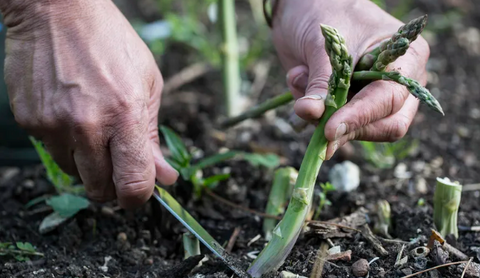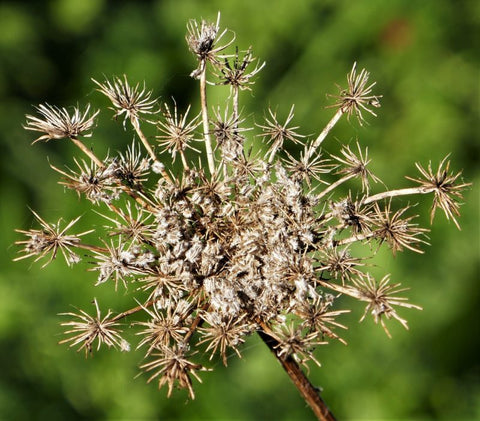Sunflowers have a special place in the hearts of gardeners and nature enthusiasts alike. Among the diverse range of sunflower varieties, Teddy Bear Sunflowers stand out for their unique charm and compact size. In this comprehensive guide, we'll take you through everything you need to know to successfully cultivate your own Teddy Bear Sunflowers, from selecting the right location to harvesting your bountiful blooms.

- Teddy Bear Sunflowers
- Choosing the Right Location
- Selecting the Ideal Seeds
- Preparing the Soil
- Planting Process
- Watering Needs
- Fertilizing Techniques
- Pest and Disease Management
- Supporting Your Sunflowers
- Pruning and Deadheading
- Harvesting Your Sunflowers
- Conclusion
Teddy Bear Sunflowers
Teddy Bear Sunflowers, scientifically known as Helianthus annuus 'Teddy Bear', are a delightful dwarf variety prized for their fluffy, double blooms and manageable height. Unlike their towering counterparts, Teddy Bear Sunflowers typically reach heights of 18 to 24 inches, making them perfect for smaller gardens, containers, or even as borders along pathways.
Choosing the Right Location
Sunlight requirements
Teddy Bear Sunflowers, like all sunflowers, thrive in full sunlight. Choose a location in your garden that receives at least six to eight hours of direct sunlight per day to ensure optimal growth and flowering.
Soil quality considerations
While Teddy Bear Sunflowers are relatively adaptable, they prefer well-draining soil rich in organic matter. Before planting, amend the soil with compost or aged manure to improve fertility and structure, ensuring that your sunflowers have the nutrients they need to flourish.
Selecting the Ideal Seeds
Understanding different varieties of sunflower seeds
When selecting sunflower seeds, it's essential to choose varieties suited to your growing conditions and preferences. Teddy Bear Sunflower seeds are readily available from seed suppliers and nurseries, offering a range of options for color, bloom size, and petal configuration.
Tips for purchasing high-quality seeds
To ensure success, opt for high-quality sunflower seeds from reputable sources. Look for seeds that are plump, firm, and free from signs of damage or deterioration. Additionally, check the seed packet for information on planting depth, spacing, and other important growing tips.

Preparing the Soil
Soil testing and amendment
Before planting your Teddy Bear Sunflowers, take the time to test your soil's pH and nutrient levels. Based on the results, amend the soil as needed to create the optimal growing environment for your sunflowers. Incorporating organic matter, such as compost or aged manure, can improve soil fertility and structure, ensuring healthy root development and vigorous growth.
Techniques for soil preparation
Prepare the planting area by loosening the soil to a depth of at least 12 inches, and removing any weeds, rocks, or debris. If planting in containers, choose a well-draining potting mix specifically formulated for flowers or vegetables. Smooth the soil surface and create rows or mounds for planting, ensuring adequate spacing between seeds or seedlings.
Planting Process
Timing considerations
Wait until after the last frost date in your area before planting Teddy Bear Sunflowers. In most regions, this will occur in late spring or early summer. Plant seeds directly in the garden or containers once the soil has warmed to at least 50°F (10°C), ensuring that all risk of frost has passed.
Spacing and depth guidelines
When planting Teddy Bear Sunflower seeds, space them according to the guidelines provided on the seed packet, typically 6 to 12 inches apart. Sow the seeds to a depth of 1 inch, covering them lightly with soil and gently patting them down to ensure good seed-to-soil contact. Water thoroughly after planting to initiate germination.
Watering Needs
Establishing a watering schedule
Consistent moisture is essential for the health and vitality of Teddy Bear Sunflowers, especially during the early stages of growth. Water deeply but infrequently, allowing the soil to dry slightly between waterings to prevent waterlogged conditions. Monitor moisture levels regularly and adjust your watering schedule as needed based on weather conditions and soil moisture.
Avoiding common watering mistakes
Avoid overwatering, as this can lead to root rot and other issues. Instead, aim to water deeply, allowing the water to penetrate the soil to the root zone. Mulching around sunflower plants can help retain soil moisture and suppress weeds, reducing the need for frequent watering.

Fertilizing Techniques
Organic vs. synthetic fertilizers
When fertilizing Teddy Bear Sunflowers, consider using organic fertilizers, such as compost or well-aged manure, to provide essential nutrients in a slow-release form. Organic fertilizers promote soil health and microbial activity, improving nutrient uptake and overall plant growth. Alternatively, choose a balanced synthetic fertilizer formulated specifically for flowering plants, applying it according to the manufacturer's instructions.
Application methods for optimal growth
Apply fertilizer to Teddy Bear Sunflowers when they are actively growing, typically in early to mid-summer. Broadcast granular fertilizer evenly around the base of the plants, avoiding direct contact with the stems or foliage. Alternatively, use a liquid fertilizer diluted to half strength and apply it as a foliar spray or directly to the soil for quick absorption.
Pest and Disease Management
Identifying common pests and diseases
Keep an eye out for common pests and diseases that can affect Teddy Bear Sunflowers, including aphids, caterpillars, and fungal diseases like powdery mildew. Inspect plants regularly for signs of damage or infestation, such as yellowing leaves, distorted growth, or unusual discoloration.
Natural remedies and prevention strategies
To control pests and diseases organically, consider using natural remedies such as neem oil, insecticidal soap, or homemade botanical sprays. Encourage beneficial insects like ladybugs and lacewings to help keep pest populations in check. Practice good garden hygiene by removing debris and fallen leaves regularly to minimize the risk of disease spread.
Supporting Your Sunflowers
Importance of staking or supporting taller varieties
While Teddy Bear Sunflowers are relatively compact compared to other varieties, taller specimens may benefit from additional support to prevent them from bending or breaking in strong winds. Install stakes or trellises near the base of the plants and secure them with garden twine or flexible ties to provide support as needed.
Creative support options for Teddy Bear Sunflowers
Get creative with your sunflower supports by repurposing household items like bamboo poles, wire cages, or decorative garden stakes. Consider incorporating natural materials such as twigs, branches, or woven willow into your garden design for a rustic and whimsical touch.

Pruning and Deadheading
Benefits of regular pruning
Pruning Teddy Bear Sunflowers can help maintain plant health and encourage bushier growth and more abundant flowering. Remove any damaged, diseased, or dead foliage as soon as you notice it to prevent the spread of disease and promote airflow around the plants.
Proper deadheading techniques
Deadhead spent blooms regularly to prolong the flowering period and encourage the production of new blooms. Use sharp pruning shears or scissors to snip off faded flowers just above a leaf node or lateral bud, taking care not to damage the stem or surrounding foliage.
Harvesting Your Sunflowers
Signs of maturity
Knowing when to harvest your Teddy Bear Sunflowers is crucial for enjoying their beauty and harvesting seeds for future planting. Wait until the flower heads have fully matured and the petals have begun to wilt and dry, indicating that the seeds are ready for harvest.
Harvesting tools and methods
Use sharp pruning shears or scissors to cut sunflower heads from the stem, leaving a few inches of stem attached for easier handling. Lay harvested flower heads in a single layer on a clean, dry surface to finish drying completely before removing the seeds for storage or roasting.
Conclusion
In conclusion, growing your own Teddy Bear Sunflowers is a rewarding and enjoyable experience that can bring beauty and joy to your garden throughout the growing season. By following the tips and guidelines outlined in this comprehensive guide, even beginners can successfully cultivate these charming flowers and enjoy their cheerful blooms year after year. So roll up your sleeves, dig in the dirt, and get ready to watch your Teddy Bear Sunflowers grow and thrive!









